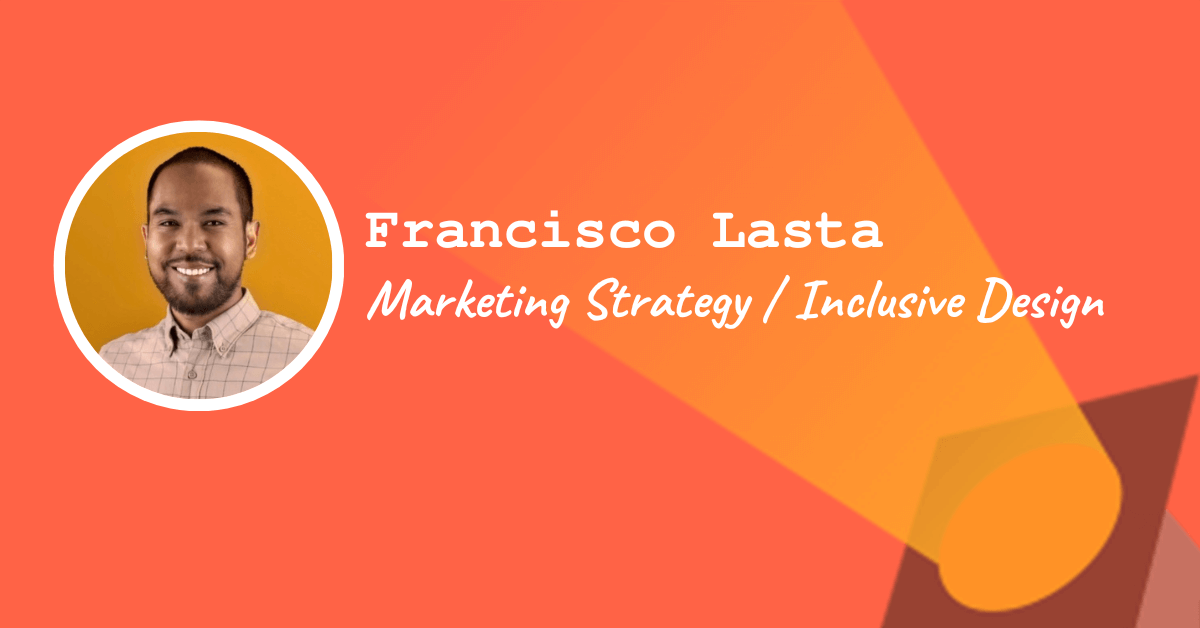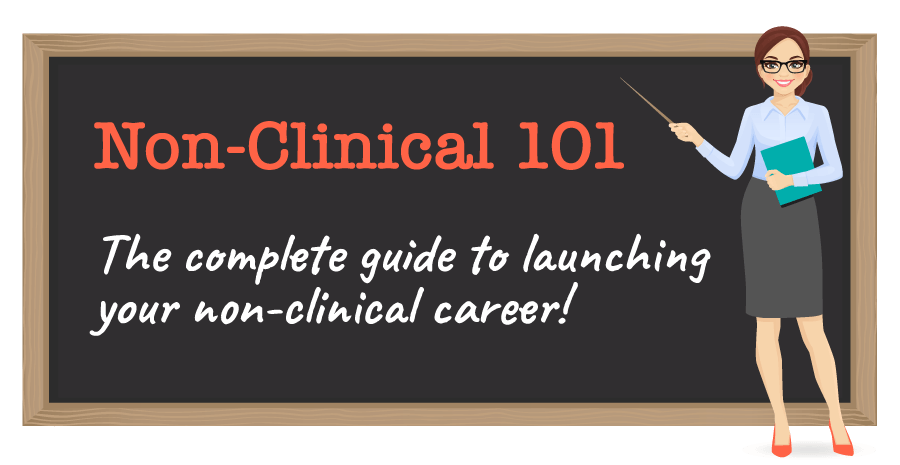This week’s spotlight is on Francisco Lasta, a non-clinical occupational therapist who now works in Marketing Strategy / Inclusive Design for M2!
This post may contain affiliate links or codes. This won’t increase your cost, but it helps keep TNCPT alive, and free of annoying ads! Thank you for your support. 🙂
What is your full name, title, and company name for your current, primary role?
Francisco Lasta — Marketing Strategy / Inclusive Design for Muller & Muller, Ltd. (M2)

Where are you located?
Chicago.
Where did you go to OT school, and what year did you graduate?
Misamis University, The Philippines.
What did you do when you first finished school, and for how long?
I was an OT instructor for two years.
Please refrain from contacting our spotlight participants on social media. There are thousands of readers just like you out there. 🙂 Please ask your questions in the comments on this blog post.
If you’re a Non-Clinical 101 student, you can network with many of our spotlight participants in the alumni groups!
In what setting(s) did you work, and what types of patients did you treat?
I worked in the following settings:
- Mental health
- Pediatrics (private practice and school-based)
- Geriatrics (community and skilled nursing facility)
What did you enjoy about your early roles? What didn’t you enjoy?
I enjoyed knowing that I’m making a difference in my clients’ lives.
As for the documentation platforms, they are not well designed from a user experience (UX) standpoint.
What else have you done since then, prior to your current role?
I have done consulting with a health tech startup. I’ve also completed aging-in-place specialization and trained in UX design.
When and why did you decide to do something non-clinical?
The pandemic made me reflect on the things I still like to do.
I’ve always been fascinated by the role of design in our day-to-day experience. It’s one of the things we delve into as OTs.
What are you doing these days?
Professionally, I enjoy collaborating with a cross-disciplinary team in our firm. We are creating inclusive-design guidelines that will make our current and future projects even more inclusive. Our firm specializes in designing public spaces, such as airports, transit hubs, schools, and parks, among others.
Additionally, I work with our marketing and business development team to pursue projects that are impactful to the communities we serve.
Personally, I’m a Second City student and have been training in improv since earlier this year.
Are you still treating patients, or are you solely non-clinical?
No, I haven’t treated clients for more than two years now.
How long have you been in your current marketing strategy / inclusive design role?
Two years and three months.
Did you get any special certifications or training along the way to help you get into your current role?
I’m already into design as a hobby, so I felt quite comfortable in a design environment. I trained in UX because of the parallels to what we do as OTs. I’m also interested in the psychology of marketing and branding.
One of the things I explored when I was still in the clinical setting is the use of 3D printing to design orthotics and adaptive equipment. I also created virtual and augmented reality experiences for my clients. This made me quite comfortable with 3D design software that I now use for marketing media.
How did you find your job? Did you apply or find it through a connection?
I was already familiar with the award-winning projects of M2 here in Chicago, and I knew quite a few people who work there.
How have people reacted to you leaving patient care?
People were surprised and often wondered how I was able to make the significant change. Being a clinical OT has been a huge part of my identity.
What’s a typical day or week in the life like for you? What types of tasks and responsibilities fill your time?
My schedule can vary from day to day, which keeps things exciting!
The thing I like best about my role is I’m able to work with different teams—from our senior leadership to our junior design team and everything in between, including accounting and HR. On a regular basis, I work closely with our president, managing principal, and proposal coordinator. We communicate regularly as we examine and make decisions on current and potential project pursuits.
My favorite part of being a marketing strategist is leading strategic planning meetings with cross-functional teams—whether it’s doing a series of SWOT (Strengths, Weaknesses, Opportunities, and Threats) analyses with the whole team to re-evaluate and refine our firm’s long-term business goals or working with the creative team from a media production agency to come up with our next brand video. I always learn new things.
With my role in inclusive design, I provide ongoing training sessions on inclusive design to our core DEI (Diversity, Equity, and Inclusion) group to deepen their familiarity with the value of inclusive design and the different processes required to integrate it into our projects.
I recently presented the draft of our firm’s inclusive design guidelines. It is still a work in progress, and it will be further developed with our team of architects and designers.
I also contribute my expertise during the conceptual phase of certain projects by participating in design charrettes. These collaborative sessions allow me to provide a different perspective through an OT lens to ensure spaces are designed holistically with accessibility in mind from the outset.
What are some of the rewards of your marketing strategy / inclusive design role?
One reward of my role is being able to contribute a unique perspective to the team.
How did your clinical background prepare you for this role? Which skills transferred?
I tap into our superpowers as OTs: we are pros when it comes to analyzing activities and performance, plus we have the ability to formulate strategies and structure training.
Figuring out where the problems are—that comes naturally to us. Not only that, but we can put together strategic plans and training programs that are tailored exactly to the needs of a person or a group of people.
Most importantly, though, we OTs have empathy as one of our superpowers. Understanding people and connecting with them emotionally is huge for working with all sorts of people—our coworkers, clients, professionals outside our organization, you name it.
It’s interesting how these abilities are so ingrained into our instincts. They run on subconscious mode most of the time, and we can tap into them without even trying.
Editor’s note: Curious about other ways you can use your OT superpowers? Check out this spotlight on Julie Meslin, MS, OTR/L, who is now Director of Employee Experience for Clinical Care Solutions!
What type of person do you think would do well in your marketing strategy role?
They have to be eager to learn something new and not afraid to start as a beginner.
Ready to start your own non-clinical career?
Do you work remotely or onsite?
My role is hybrid.
Did you read any books, take any courses, or do anything special overall to get you where you are today?
Yes, I devoured a lot of LinkedIn courses.
What is a typical career path for someone in your marketing strategy / inclusive design role?
That remains to be seen. I don’t know anybody yet with the same role as I have.
What is next for you? What are your high-level career aspirations?
I really want to lead the movement of making public spaces more inclusive.
After all, public spaces can’t truly be considered “public” if they exclude certain segments of our population by limiting their access, whether it’s intentional or unintentional.
If you look around, there are many designed spaces that present barriers to full experience and participation, especially for people with disabilities.
What would you recommend to someone who is considering going into a role like yours? Do you have any special words of wisdom for the readers?
Be aware of what you are good at, and find strategies that will make you capitalize on your strengths.
What would you like to change most in your profession, and why?
I would like the profession to be more open to and supportive of therapists who are in the emerging practice arena.
What career advice would you give yourself that you wish you had during school?
Explore career options early.
What would you teach to today’s graduate students in your profession, if you had the opportunity?
I would teach them about inclusive design because, as OTs, we can literally change the world.
Do you have any special advice for others who want to follow in your footsteps?
Never stop upskilling. The world is ever-changing.
Network with other professionals rather than just in your clinical bubble.
Be ready with your elevator pitch, and clearly articulate the value you can bring to the table as an OT.





